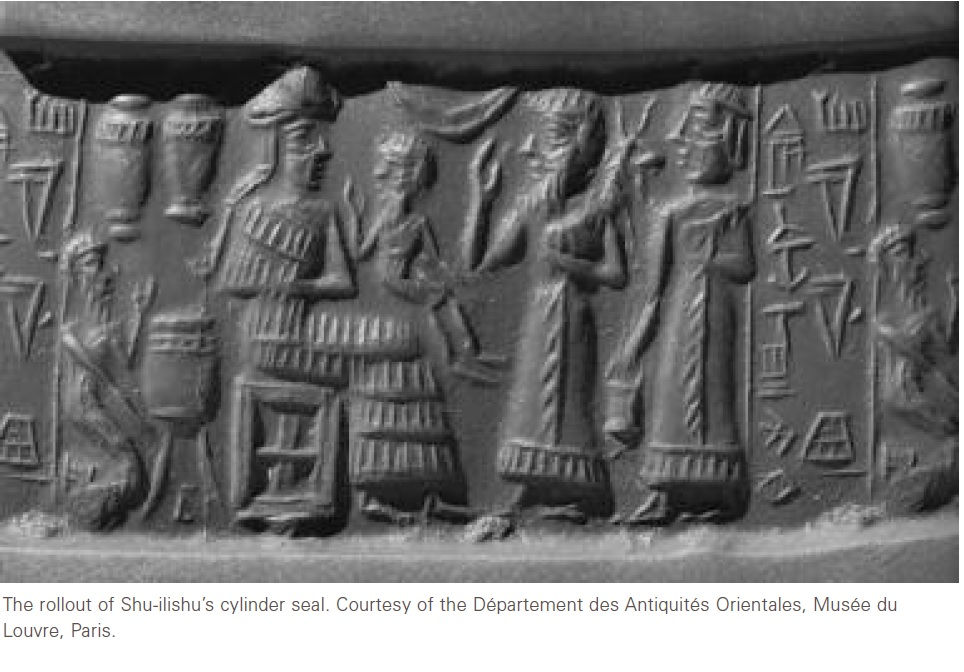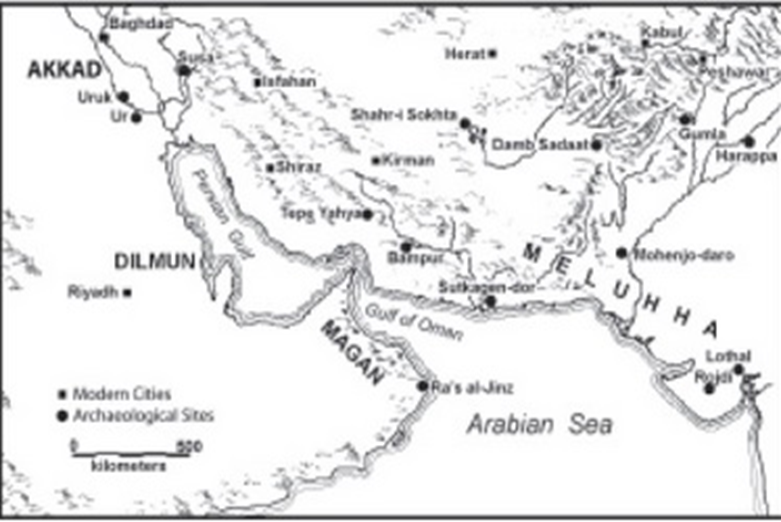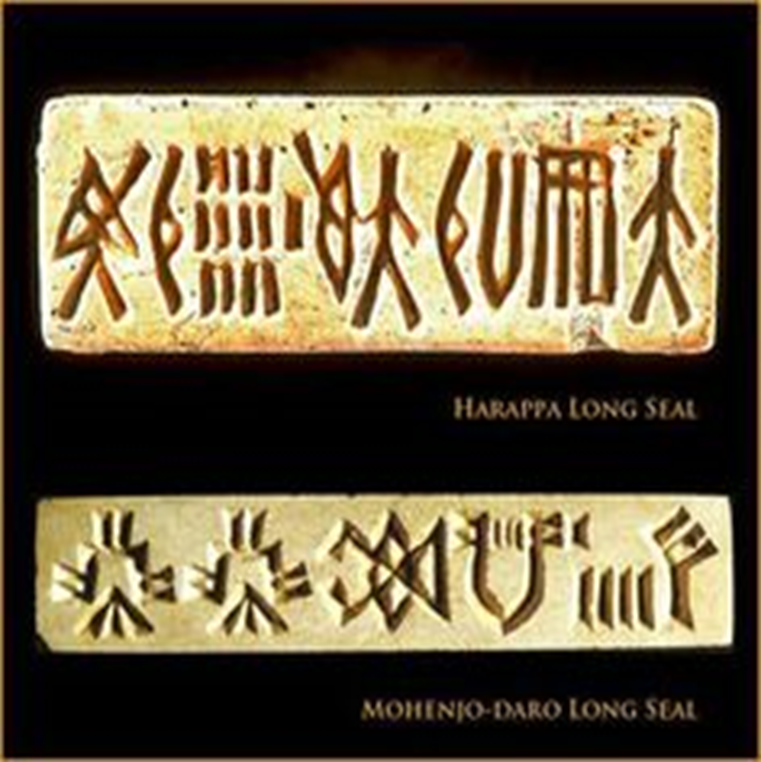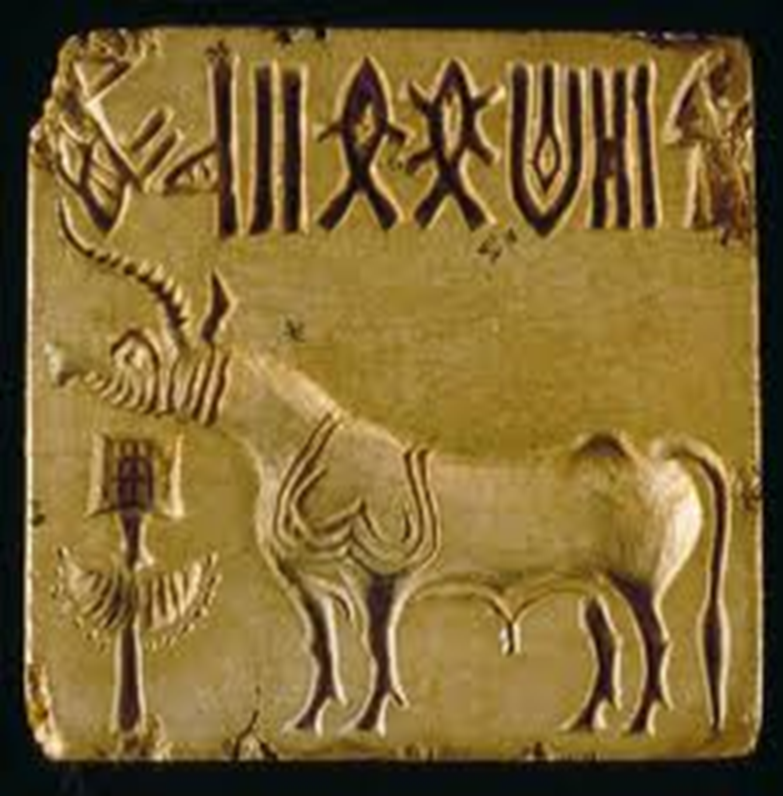A seal by an Akkadian translator in the 3rd millennium BC may revive hopes of unlocking the pictorial writing of the Indus Valley.

Seal Shaw Elishu
This article deals with the details of a cylinder seal from the Akkadian period (about 2200 BC) by a translator named Shu Elishu, in which he mentions his proficiency in the language of the inhabitants of Melukha and follows attempts to determine the exact location of this region.
During the rule of the Akkadian Emperor Sheru-Kin (which means the legitimate king), known as Sargon the Great, whose rule lasted for more than 56 years (2340 - 2284 BC), the imperial borders of ancient Iraq extended to include large areas. King Sharukin deserved the title of King of the Four Regions, as he asserted his position in the middle and (Sumer to the south, Elam to the east, Subaru to the north (Assyria and southern Anatolia), and Amurru to the west (the Levant). During his reign, trade activity flourished significantly. The annals inform us. His ships reached the islands of Cyprus and Crete (called Kaftaro, which is one of the islands of present-day Greece) in the Upper (Mediterranean) Sea, where he washed his sword, which is an ancient custom that symbolizes the extension of influence and authority, and carried it on the northern region of Akkad, which is now located in Southern Anatolia (Bushanda) to support the merchants of Akkad. The rulers of the villages and towns they passed through attacked them and imposed tribute and obedience on them. Perhaps this was the beginning of the penetration of the merchants of Akkad and Assyria (later) into the heart of Anatolia, where Cappadocia is. The commercial texts we received from it in the Assyrian language date back to the beginning of the second millennium BC. Among the news that we received during his reign was that ships were coming from Majan (identified as Oman and the current Emirates), Dilmun (Bahrain), and another region called (Malukha). It docked in the ports of his busy city (Akkad), which demonstrates beyond doubt the extent of prosperity that Mesopotamia achieved in that period.

In the library of the Louvre Museum, he found a photographic archive bearing the name of a wealthy person named “Louis Duclerc.” In it, he collected pictures of various possessions that he had purchased from antiquities dealers in the nineteenth century. Among the collection stands out a picture of a cylinder seal impression that dates back to approximately 2200 BC and can be read with some difficulty. It contains the name of a person (Shu Elishu) and is mentioned. In addition to it, some information about him was translated, and that he was working as a translator who was fluent in the language (tongue) of the region of the people of Molokha. It is worth noting that some ancient Iraqi cuneiform documents and some results and archaeological excavations in the Arabian Gulf indicated the presence of a settler called “the village of Molokha,” and the residents of the region were known as “” “The sons of Molocha,” so the presence of a translator fluent in this language in Mesopotamia was a given. Because of its connection to commercial activity between Akkad and the Malukha region during the third millennium BC.

Examples of seals with epigraphic symbols from the Indus Valley - Mohendaro and Kharaba - 2500-1900 BC.
Determining the exact location of the region or country of Molokha was a matter that constituted a serious challenge for most researchers, and to this day, schools of opinions were scattered, the most general of which is the classical school, which supports the idea of Molokha being located on the coast of present-day Pakistan, which is part of the (Indus Valley) in which the Mohendaro civilizations flourished and were destroyed. Between 2500 and 1900 BC) then it disappeared suddenly, and the Sumerians had something like a commercial representation of it, and other opinions emerged suggesting that Malukha was Abyssinia or Egypt, and they have their support in this matter based on the meaning of the reading of the name, and recently new opinions have emerged about the fact that Malukha is It is the village of Malouha, located in the United Arab Emirates.

Examples of seals with epigraphic symbols from the Indus Valley - Mohendaro and Kharaba - 2500-1900 BC.
The seal in question was presented to Professor Edith Porada, the famous cylinder seal expert. She confirmed its authenticity and noted that this seal had been cut and reassembled, which is common on ancient Iraqi seals. She also added that the style of the seal dates back to the Akkadian era (2371-2230 BC) and perhaps To the third era of Ur. In June of 2003, the issue of the cut in the seal was re-examined to ensure that the reading was correct and that the person mentioned (Sho Alisho) was a translator fluent in the languages (Akkad and Malukha), and as a result, attention was focused on trying to reach the original seal in order to obtain a new edition. Confirms previous information.
What's up in New York?

In the spring of 2004, the Metropolitan Museum in New York held an exhibition entitled “The First Cities” and a special section was devoted to the civilizations of the Near East. Among the collections that were hosted was a statue of the “Priest King” dating back to the period of the Mohendaro civilization (2200-1900 BC) and shown in The picture above, which was lent to the museum by the government of Pakistan, and directly next to the statue was displayed a cylinder seal belonging to a person from the Akkadian era named “Shu Alishu”, with an impression next to it indicating his proficiency in the language of the people of Molokha, and indicating that it is one of the possessions of the Louvre Museum (the Duclercq Collection). This was news. It was wonderful at that time because it would enable researchers to obtain a new and clear print of the seal, in order to conduct the required examination. All tests and scrutiny were conducted on it and it was found that it matches Professor Broda’s previous conclusions regarding the universe. The seal is original and belongs to a person with that name who worked as a translator between Akkad and Malokha.

Examples of seals with epigraphic symbols from the Indus Valley - Mohendaro and Kharaba - 2500-1900 BC.
The importance of this seal stems from the fact that it supports the existence of broad commercial relations that necessitate transactions and movements between the Mesopotamian and Indus valleys, and the existence of the need for the services of translators for the languages of the two countries. This will be the key to a larger task in the future, which is to decipher the symbols and letters that we received in the seals of the Indus Valley, and which have not been solved yet. , due to the lack of a binary text for comparison, as happened previously and successfully with the Rosetta Stone in Egypt (deciphering the hieroglyphic language) and the Behistun inscription in Iran (deciphering the cuneiform language). Therefore, we hope that future exploration operations in Iraq will reveal this In revealing a tablet with a dual text for comparison and analysis, to learn more closely about the secrets of the Mohendaro and Kharaba civilizations, and perhaps reach the biggest mystery of the reasons for their sudden disappearance.

Examples of seals with epigraphic symbols from the Indus Valley - Mohendaro and Kharaba - 2500-1900 BC.
Sources:
1- The language of the Indus Valley and attempts to decipher the cuneiform pictorial signs of the Harappa civilization by the Indian researcher Rajesh Rao, using the computer to try to read the texts of Indusian seals.
2- A lecture by the archaeological expert and anthropologist at the University of Wisconsin, Mark Keenor, about the Malukha region and its relationship with the civilizations of ancient Iraq since the middle of the third millennium BC.
hu-ilishu’s Cylinder Seal...BY GREGORY L.Bronze age and writing system of Sarasvati hieroglyphs evidenced by two rosetta stones - (Kalyanaraman-2009)

